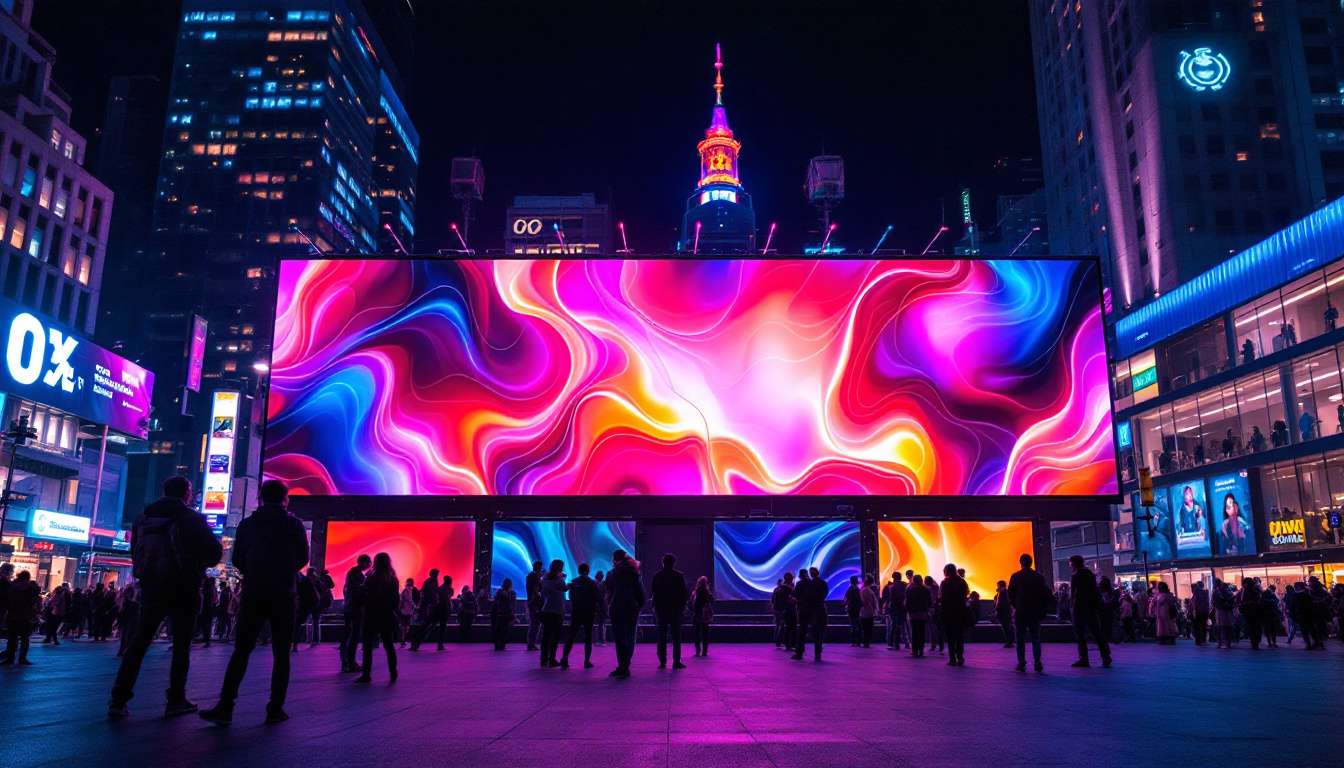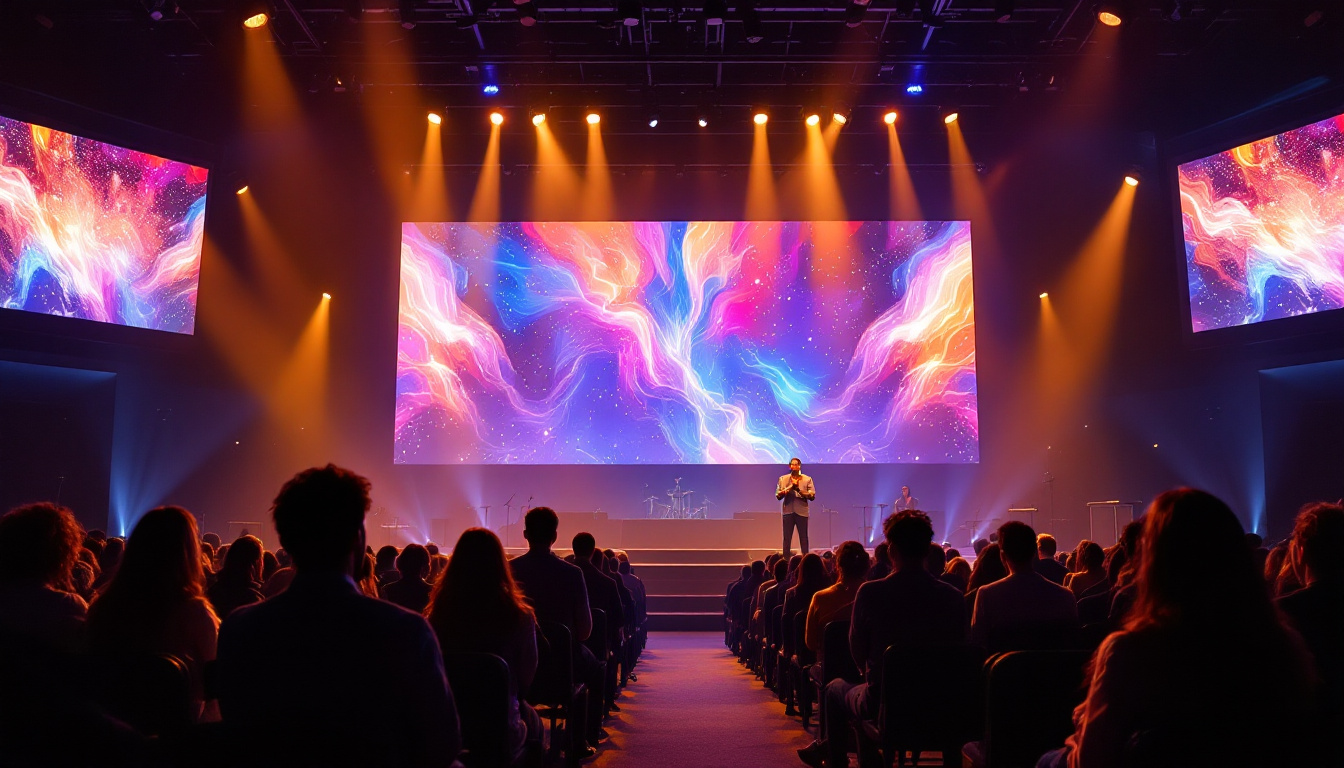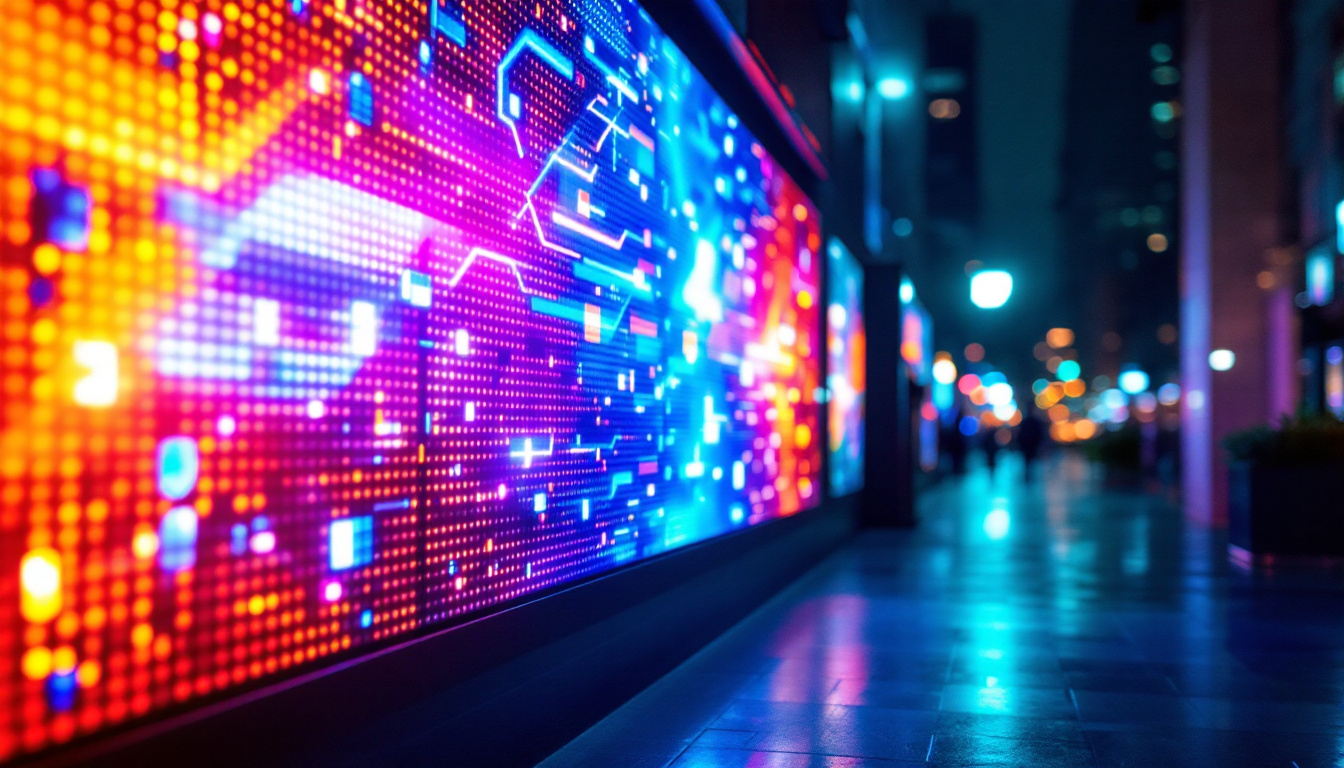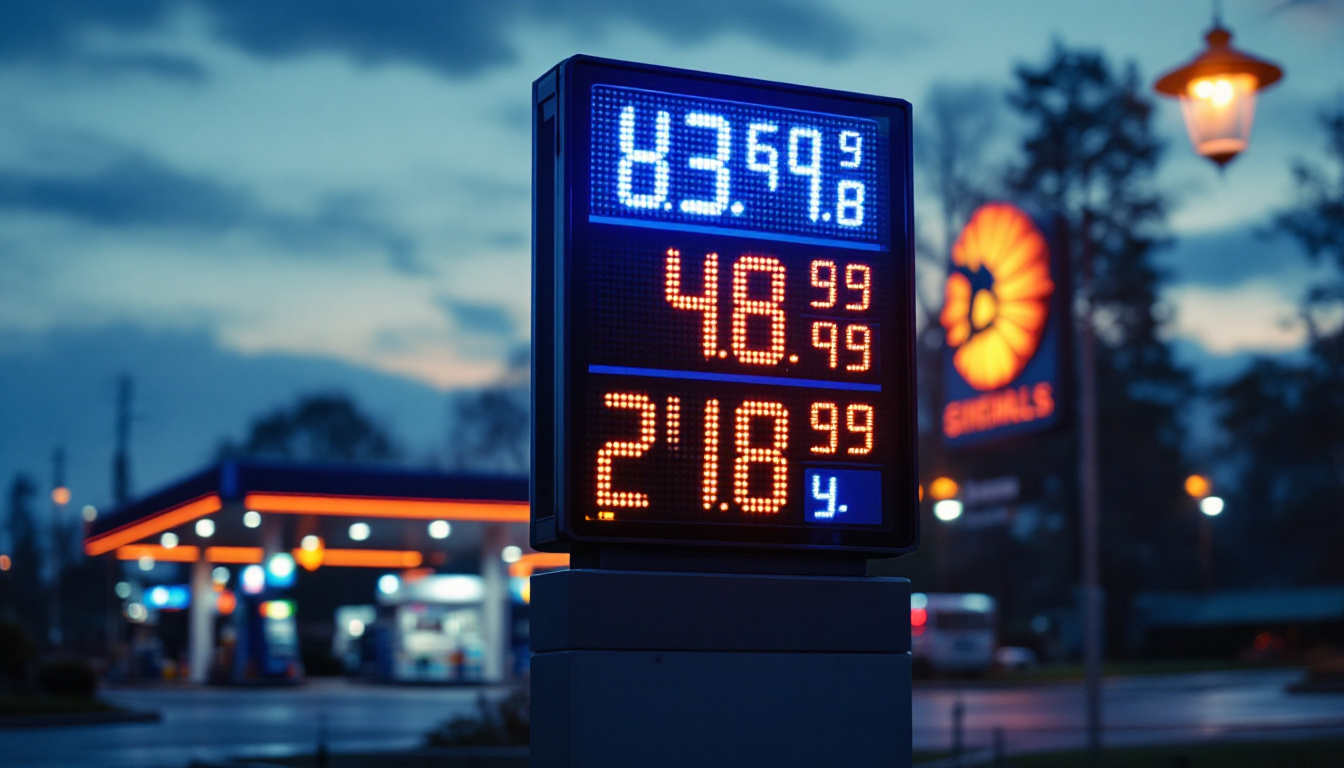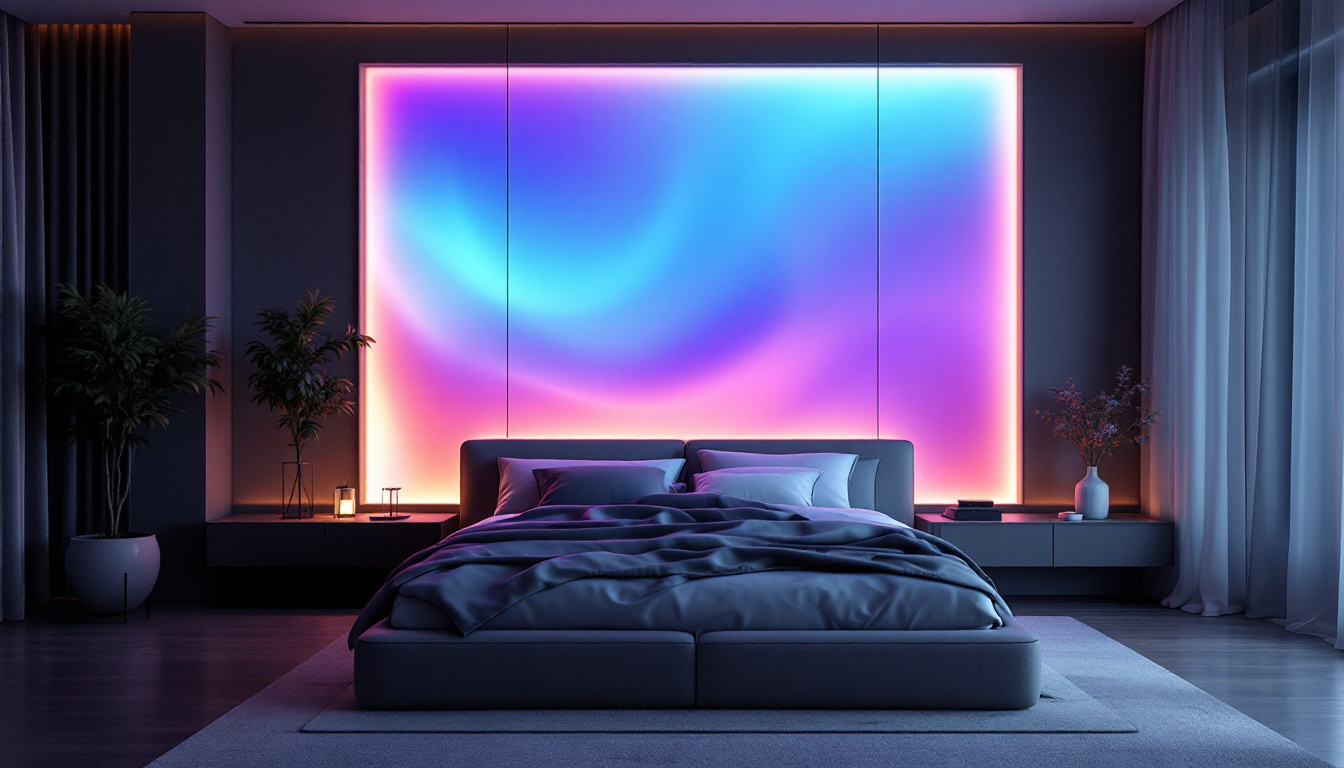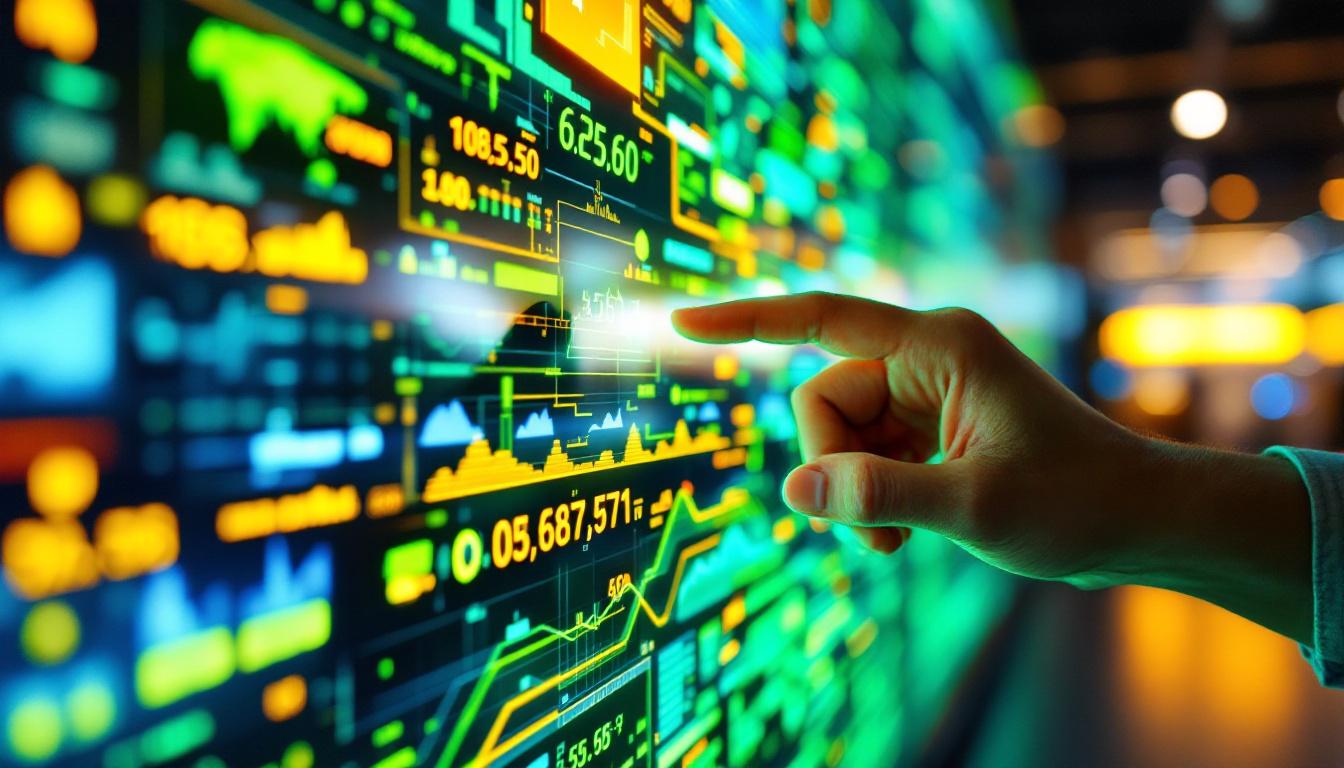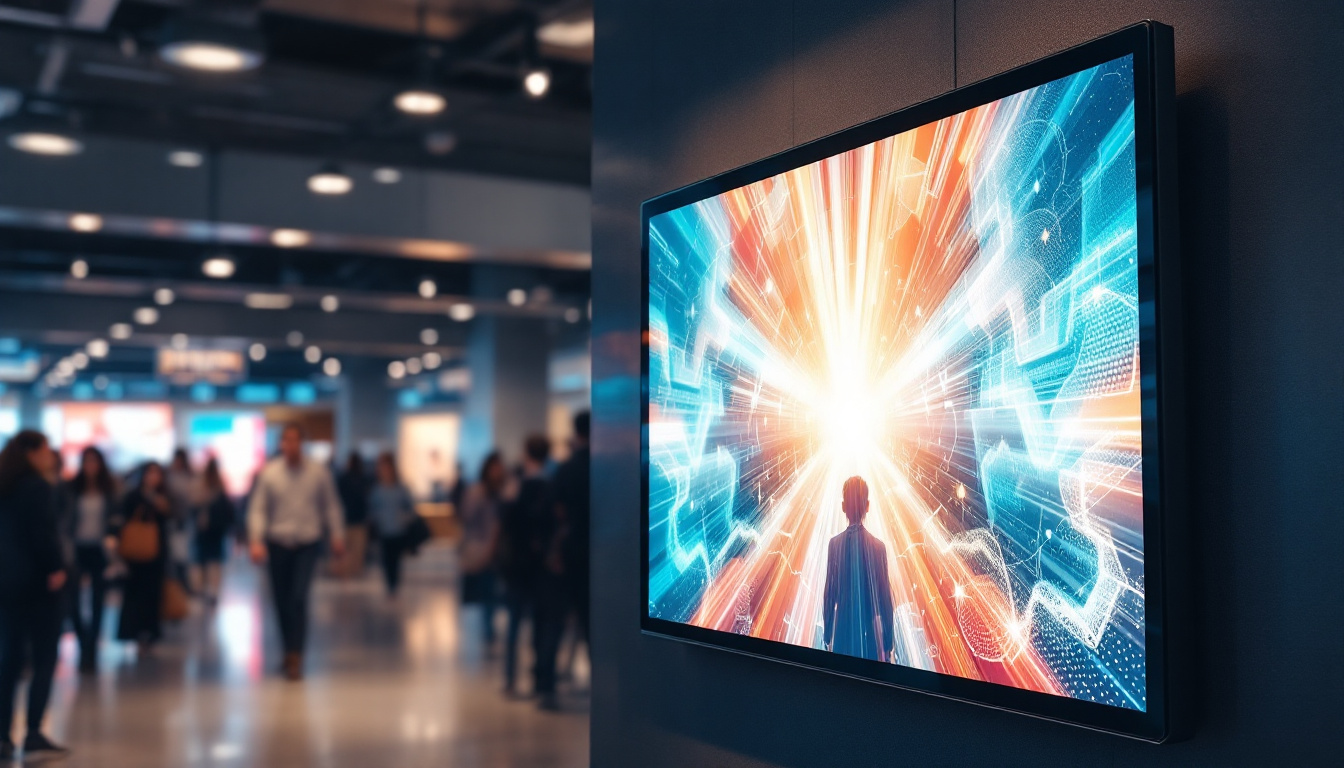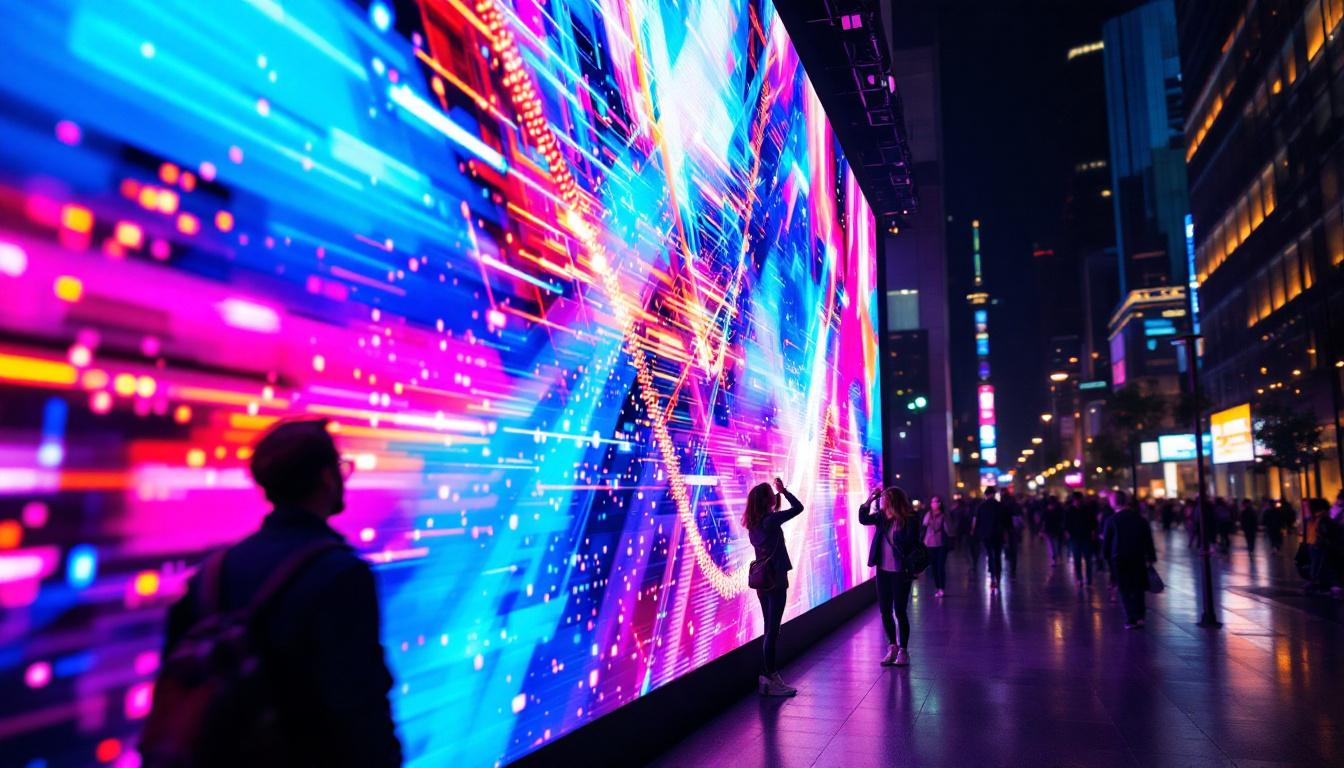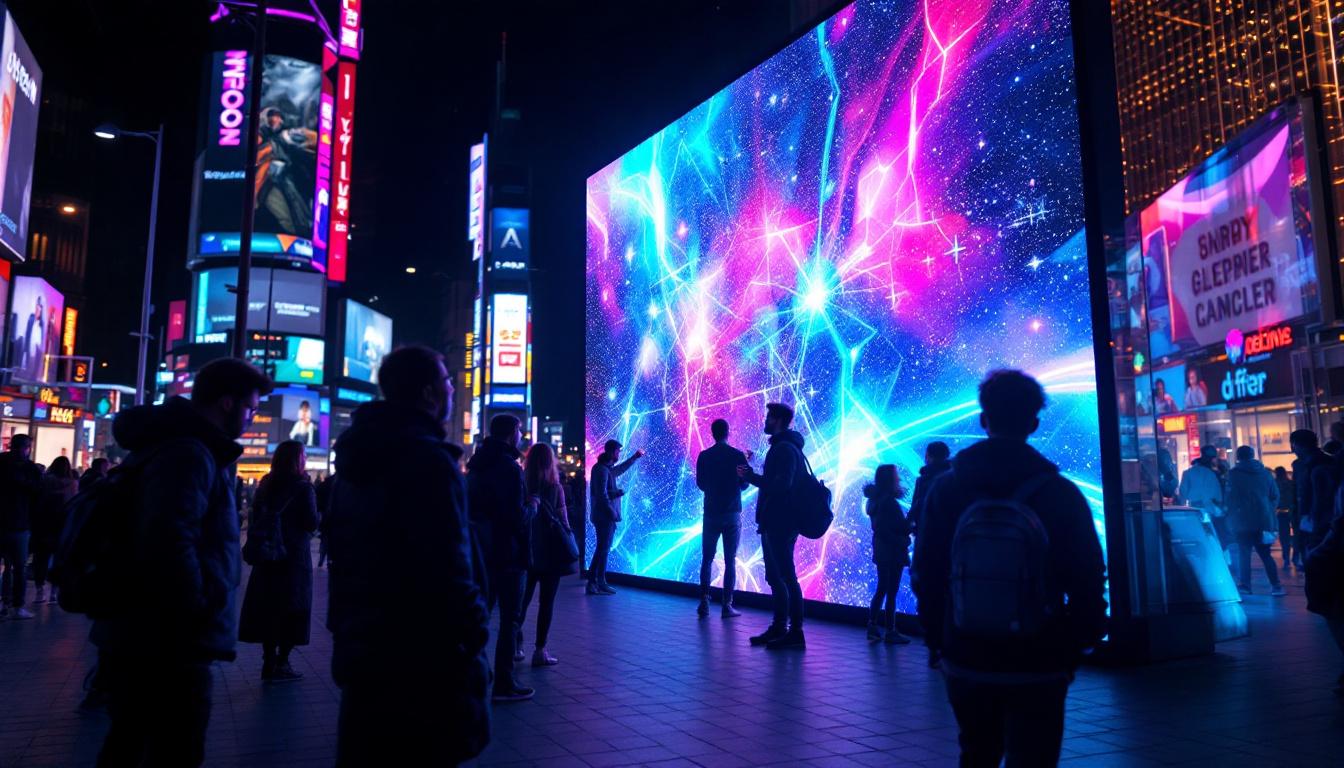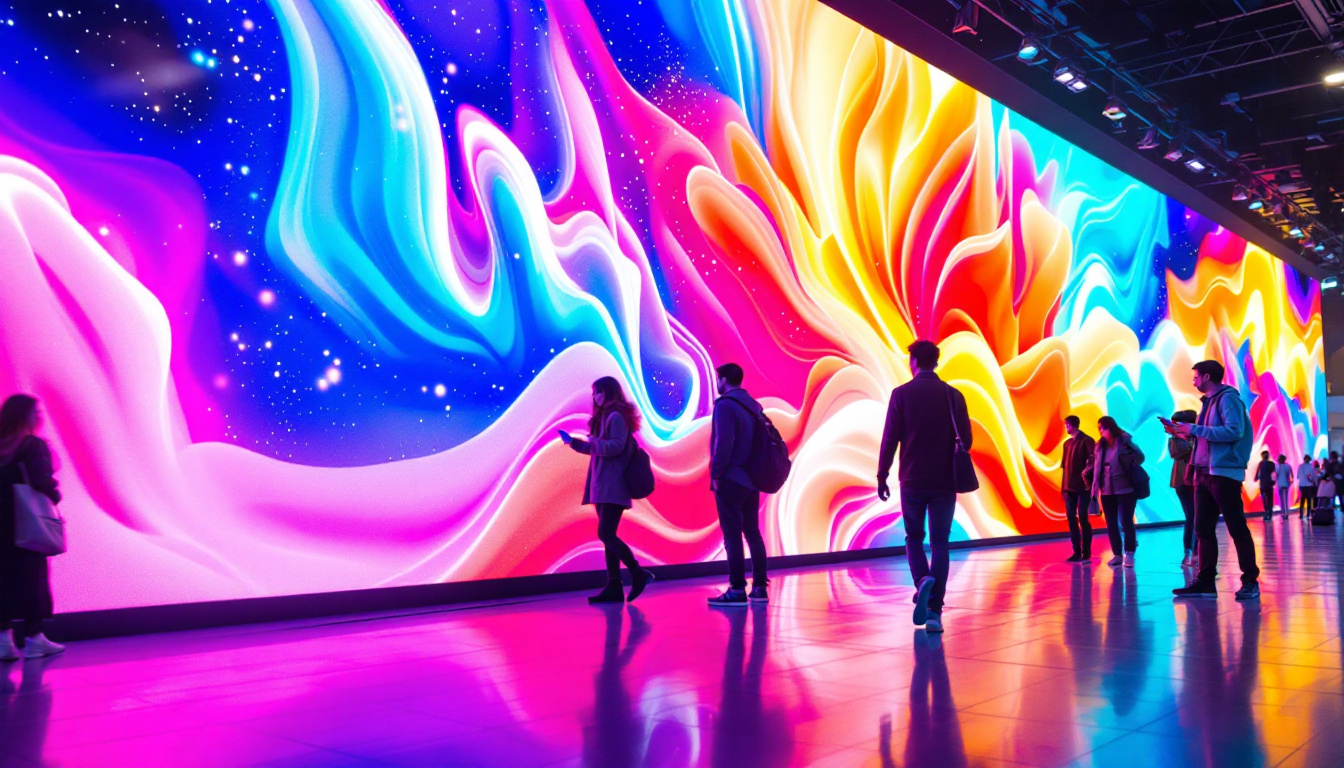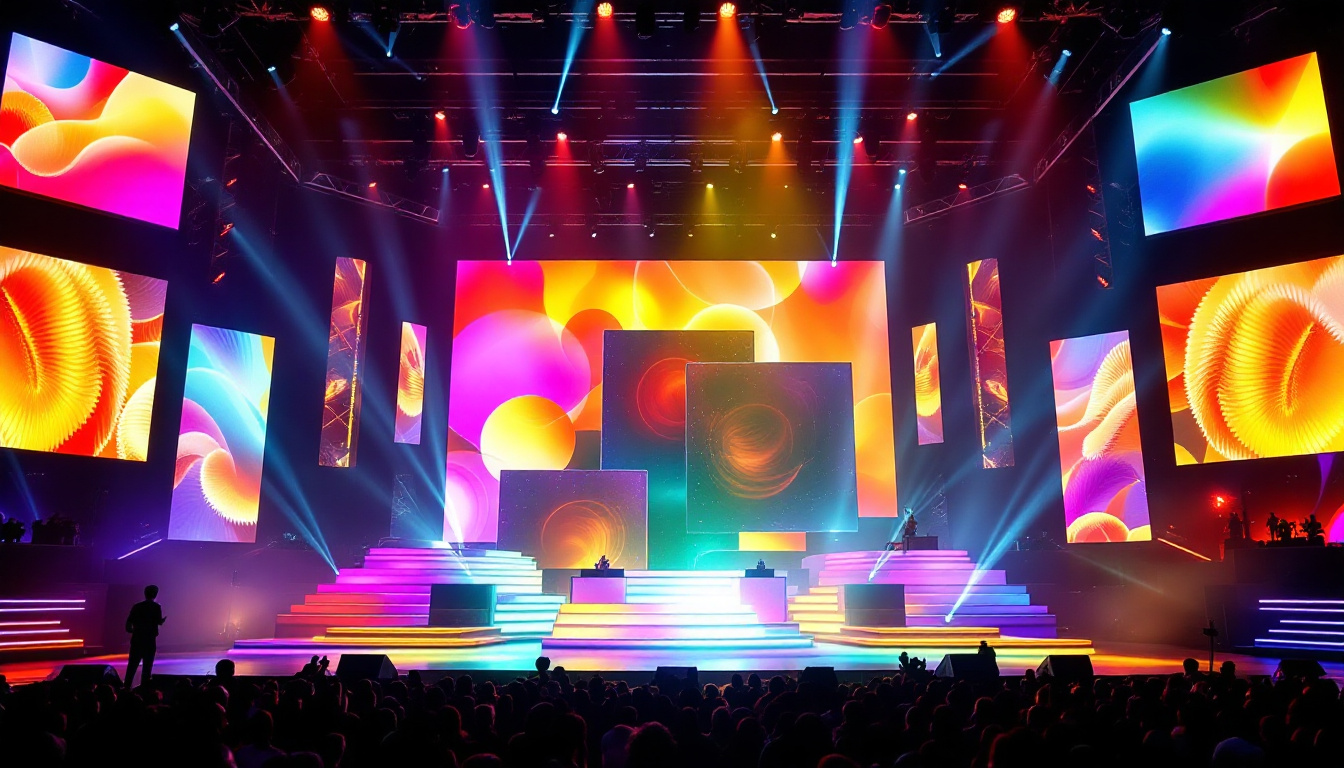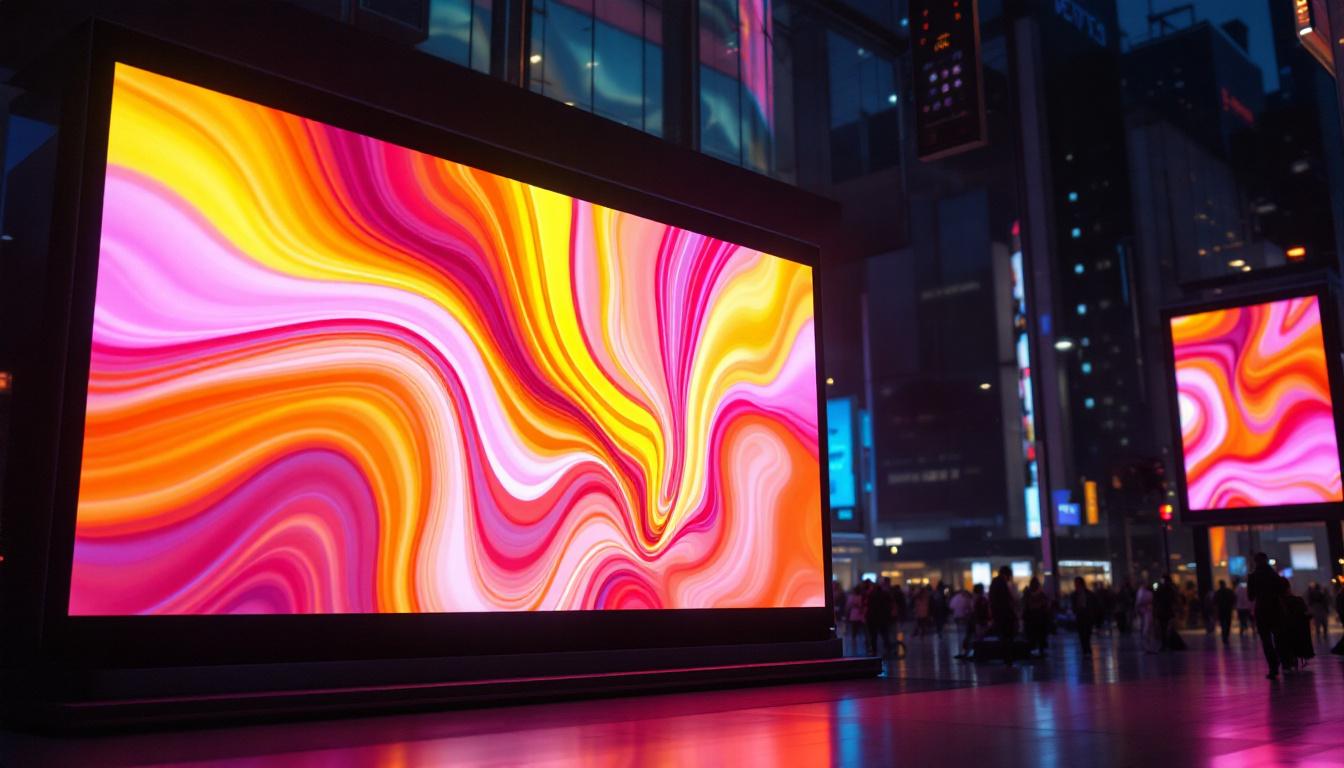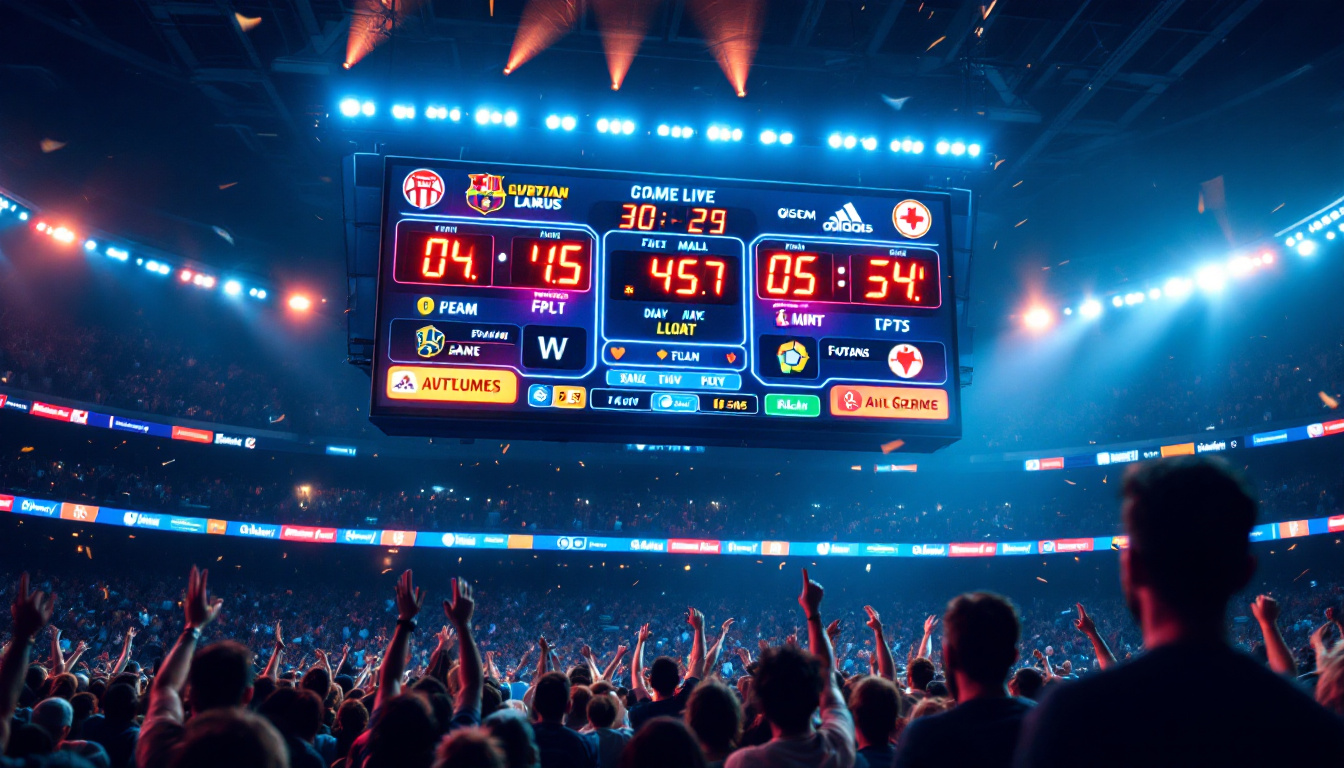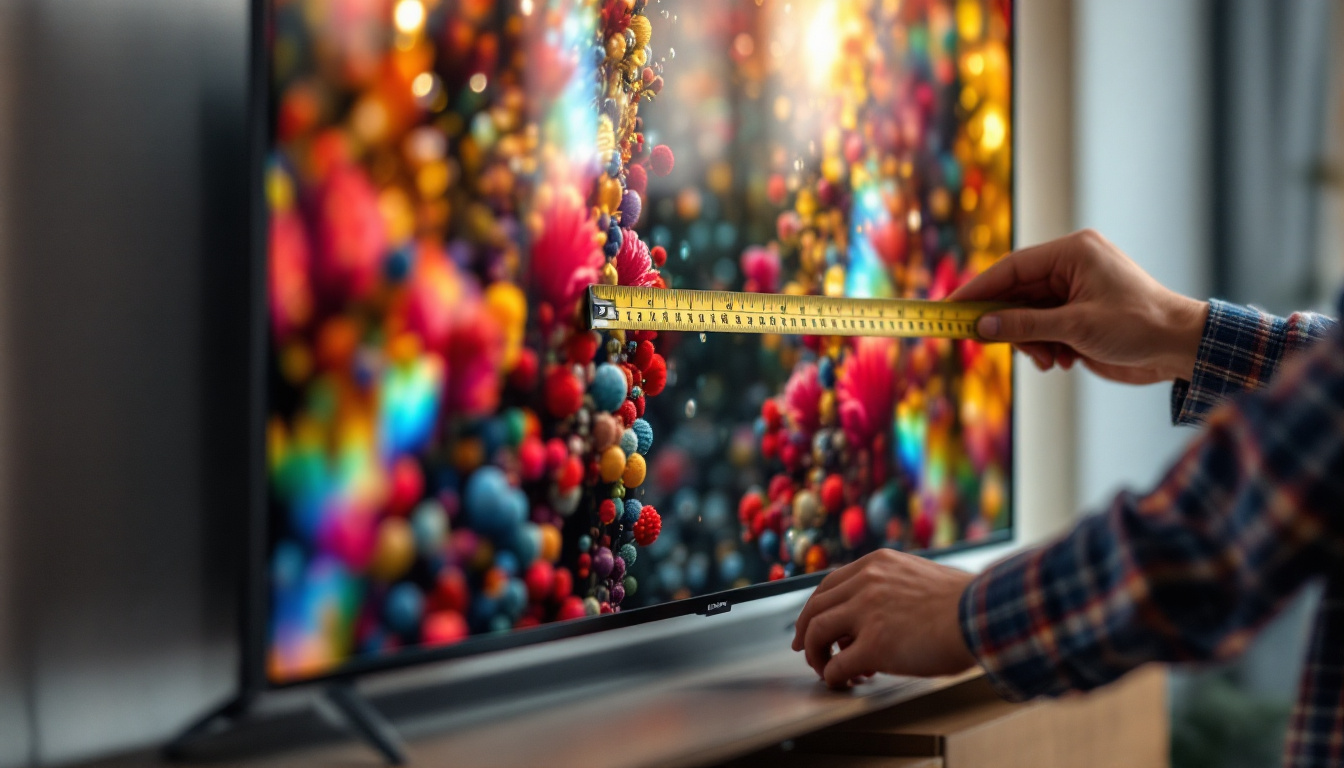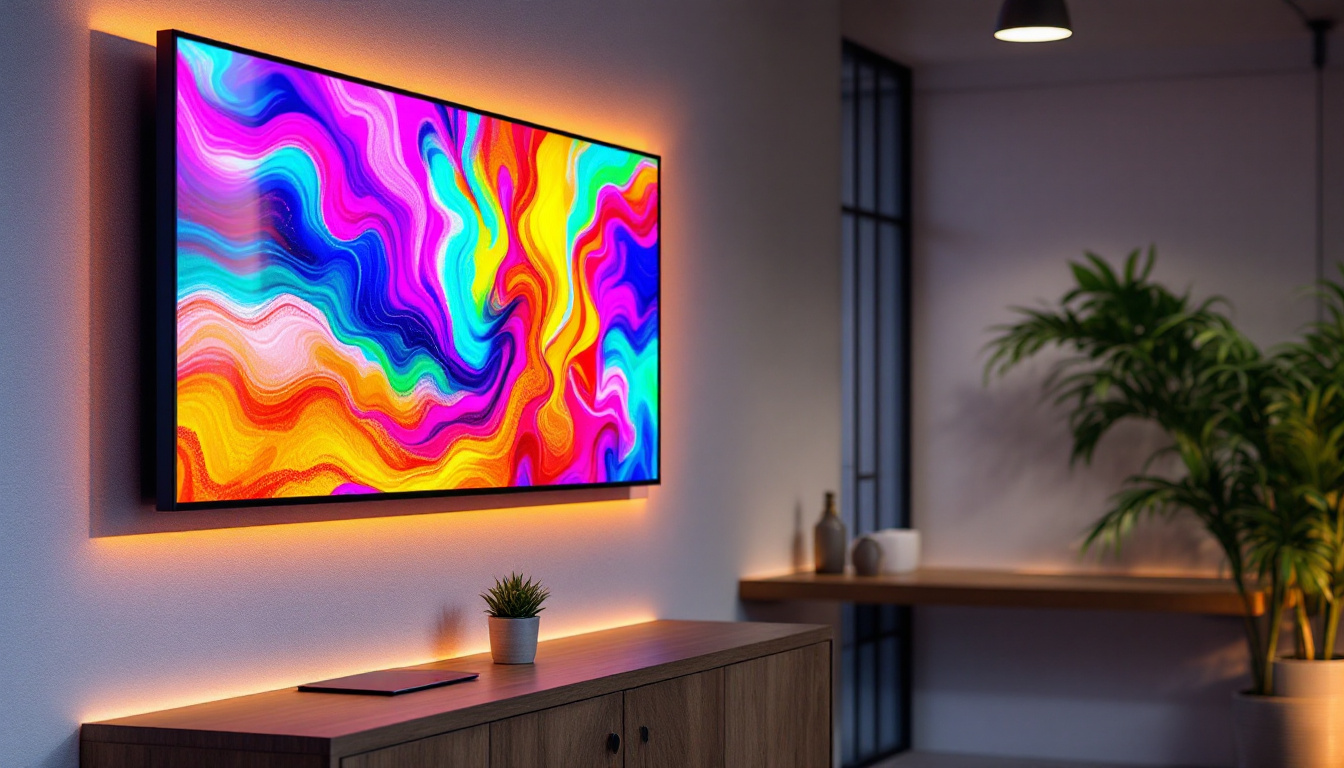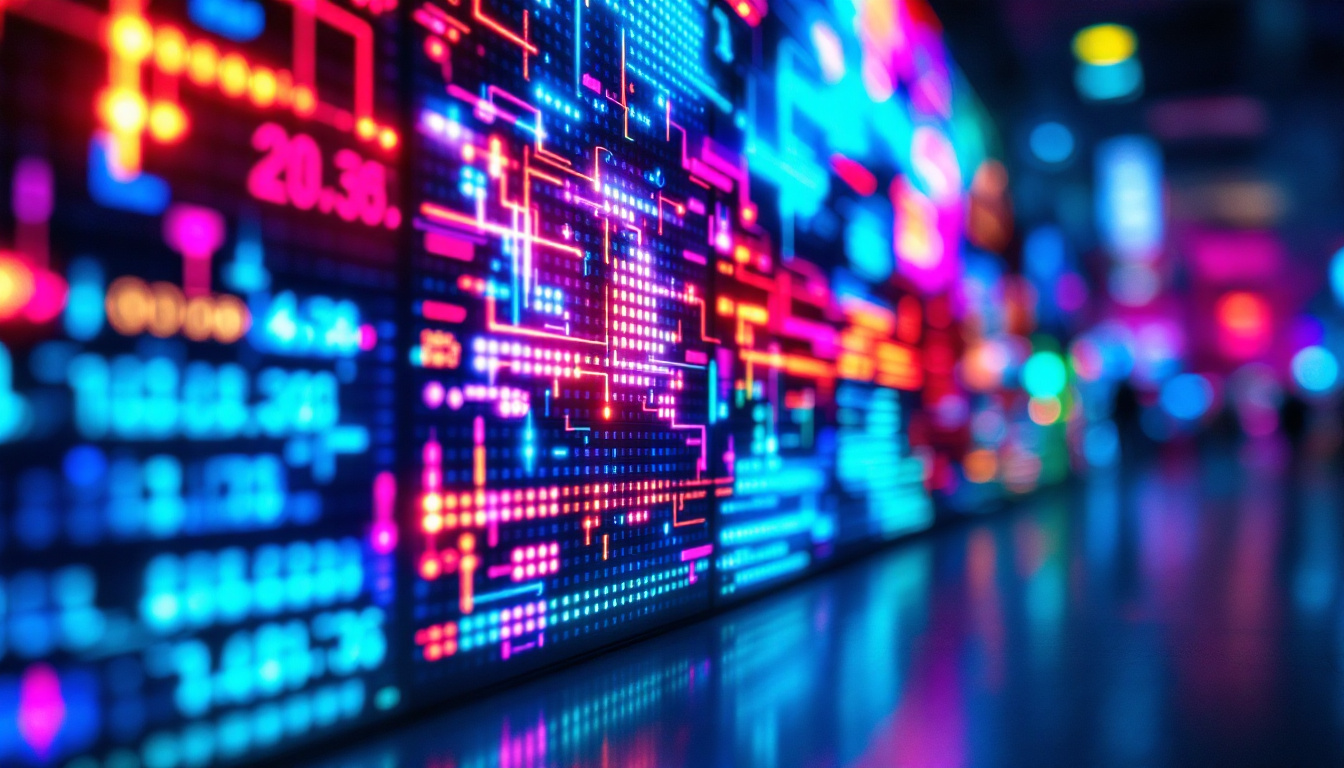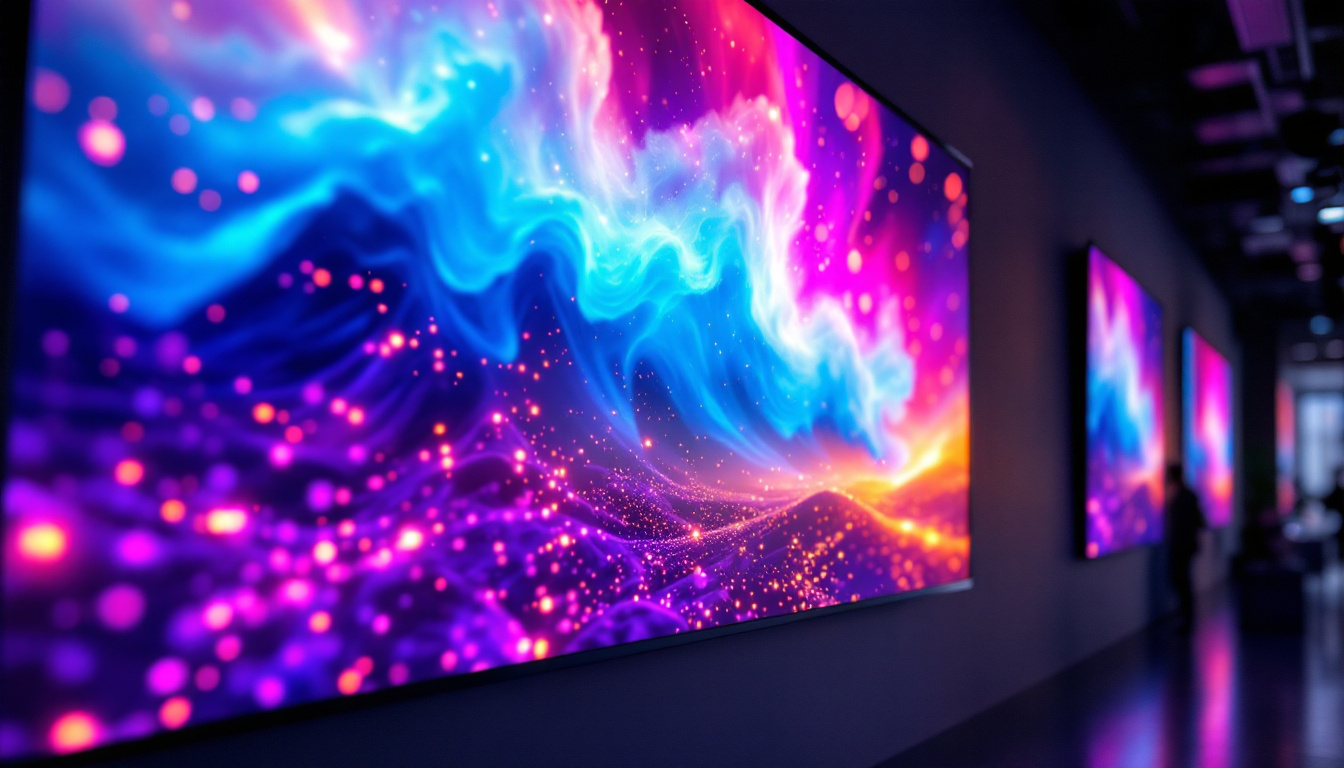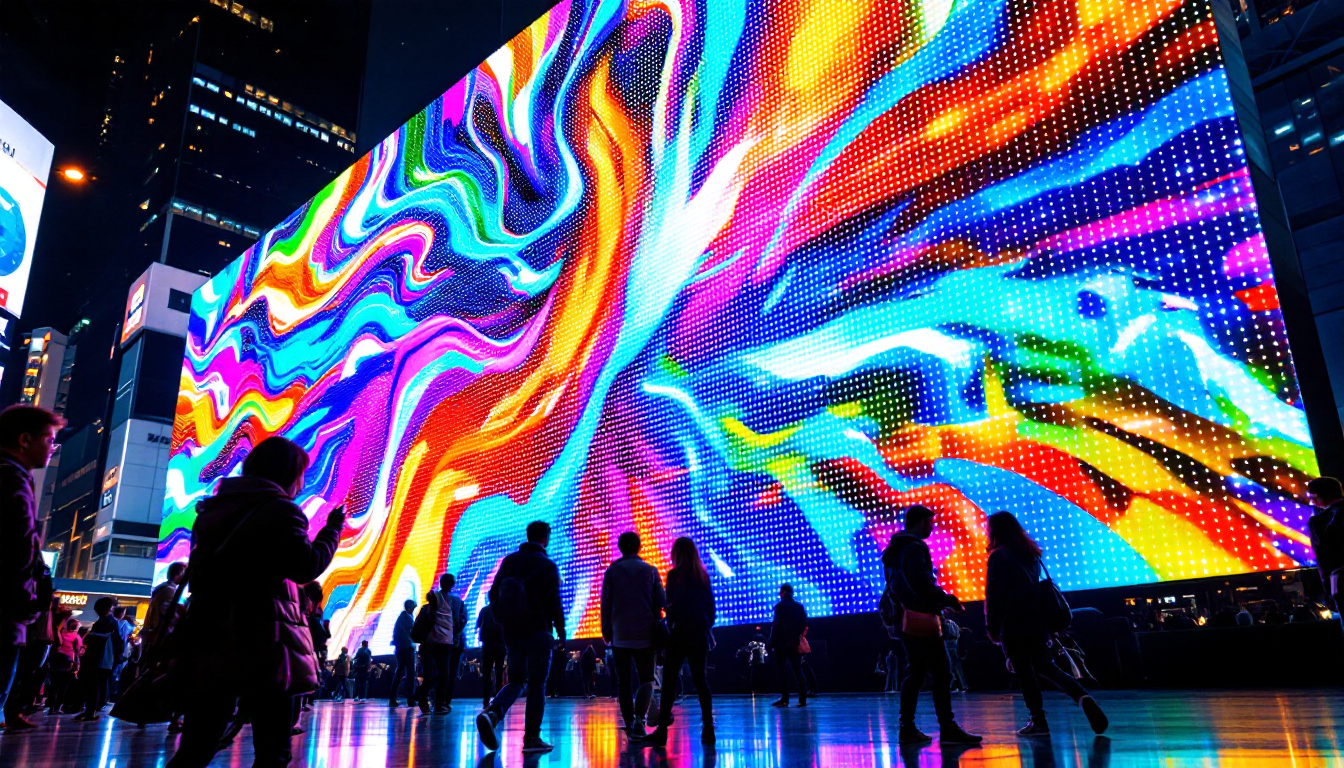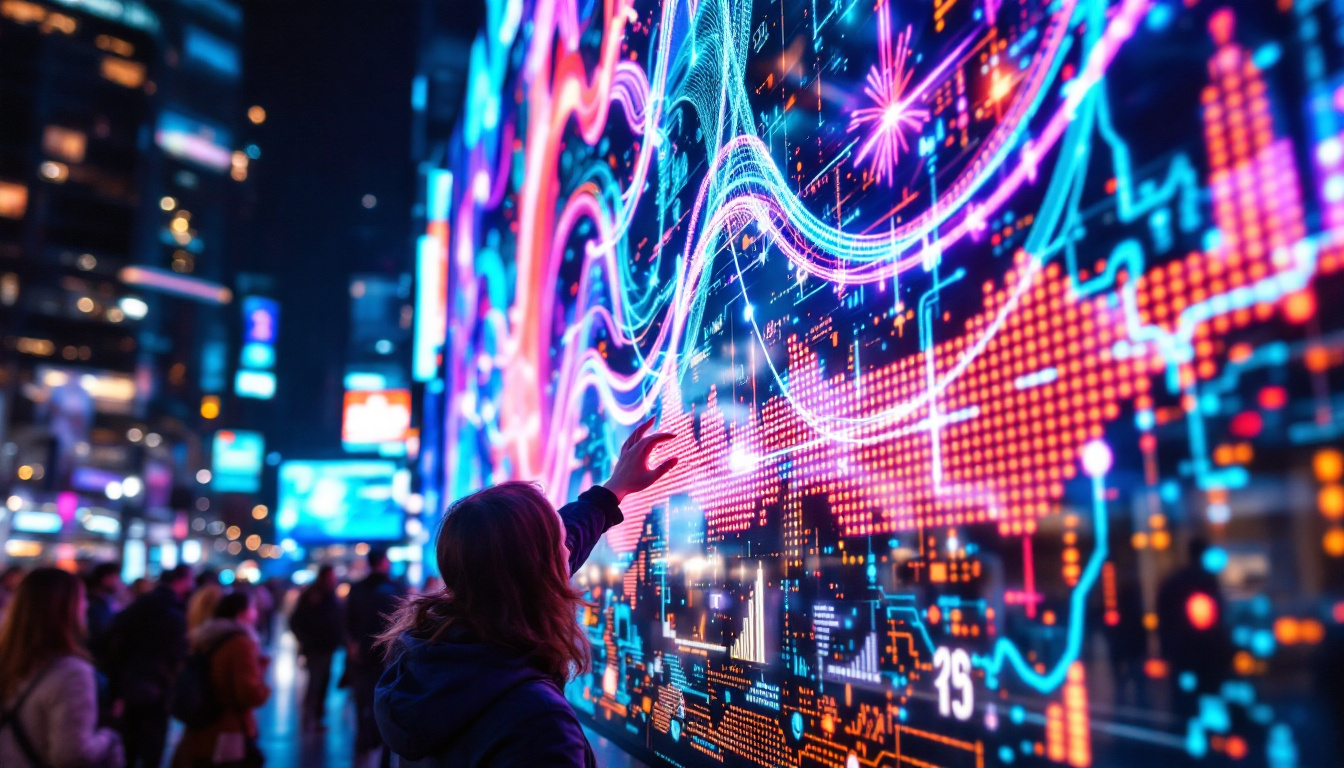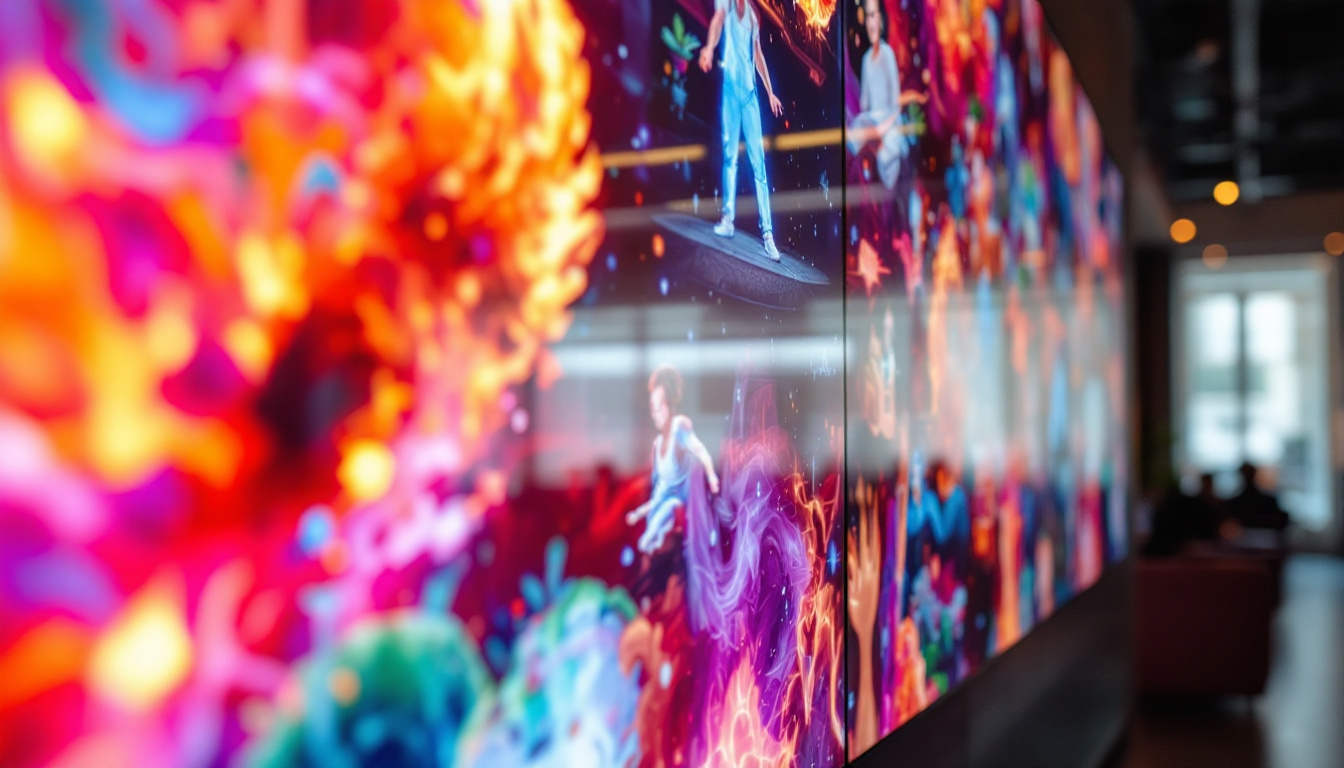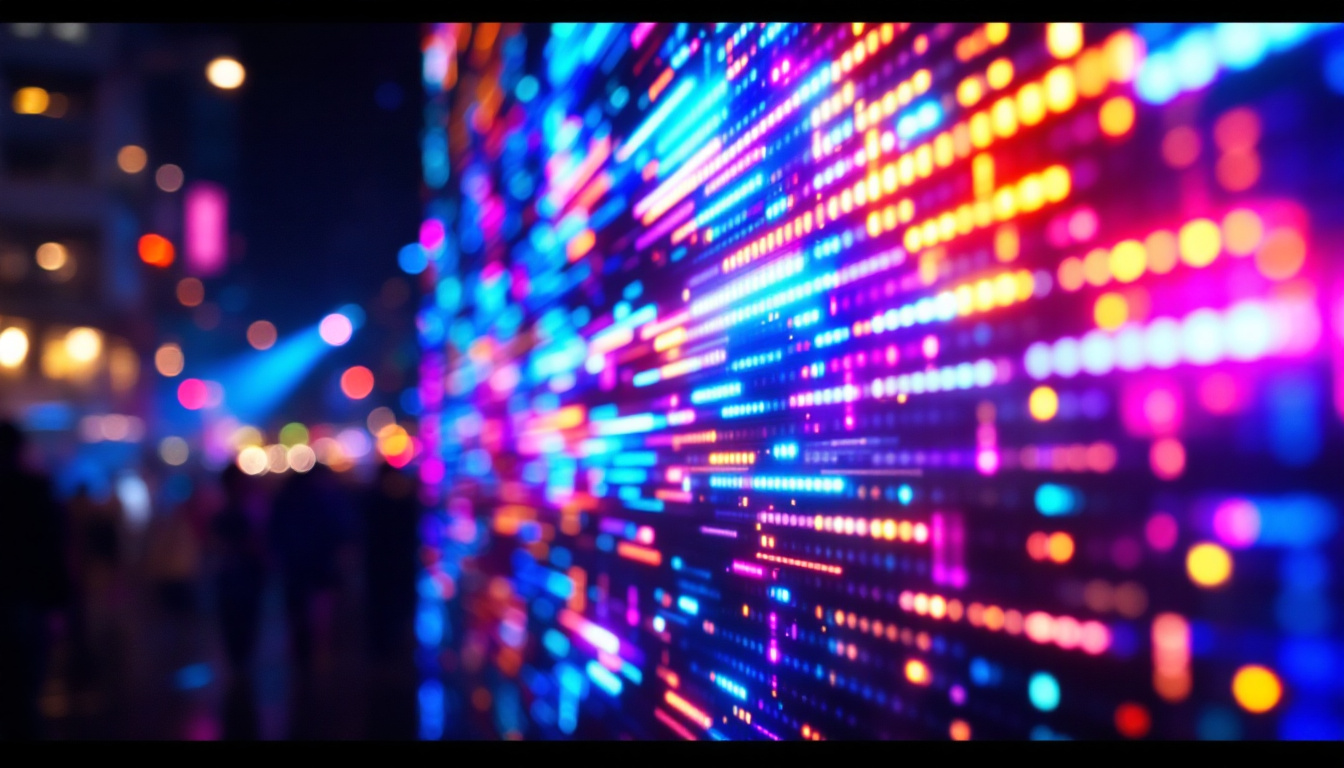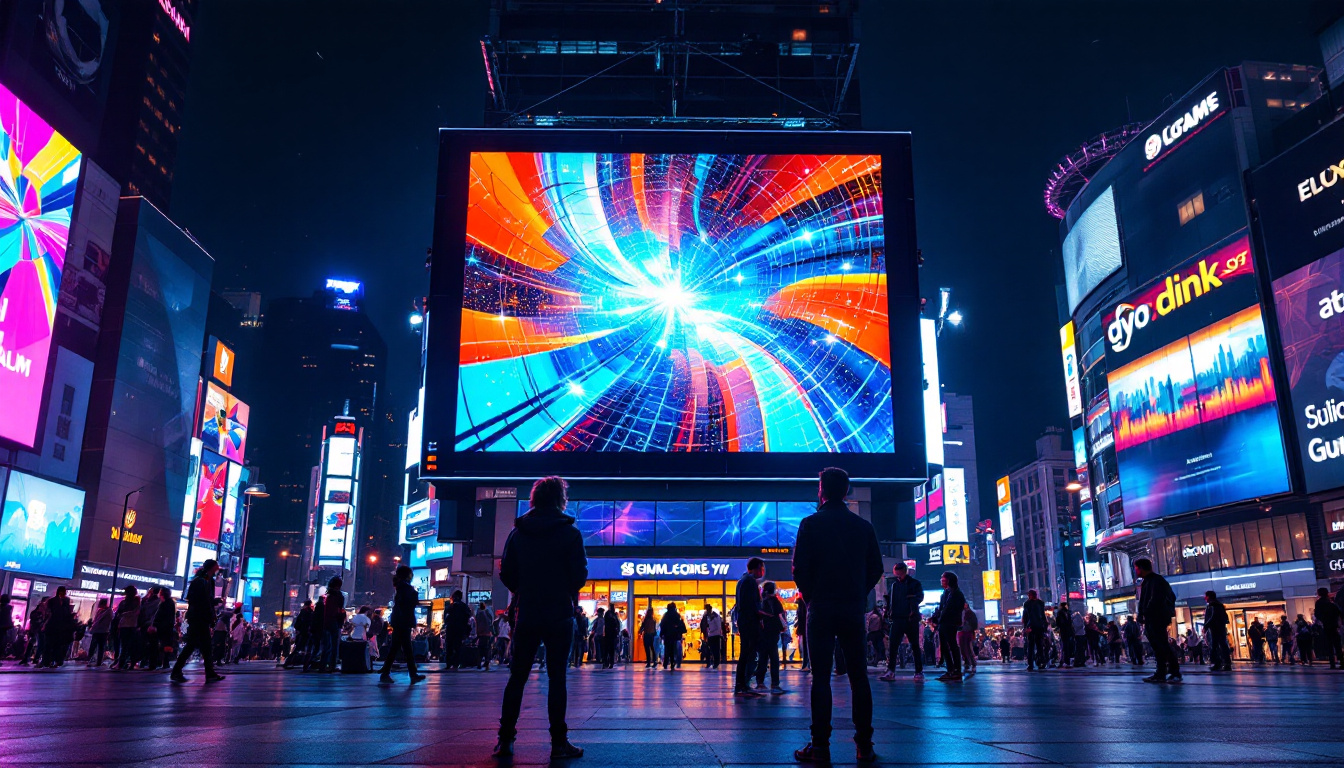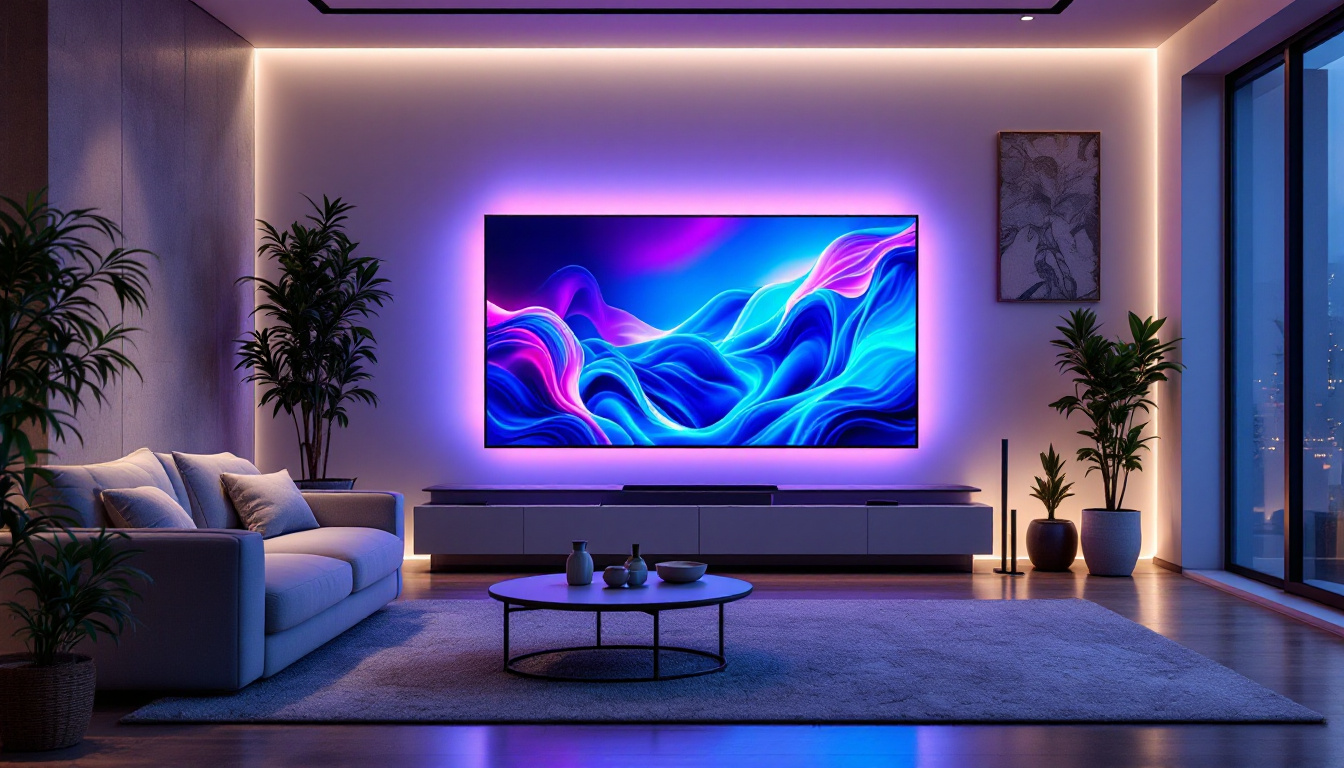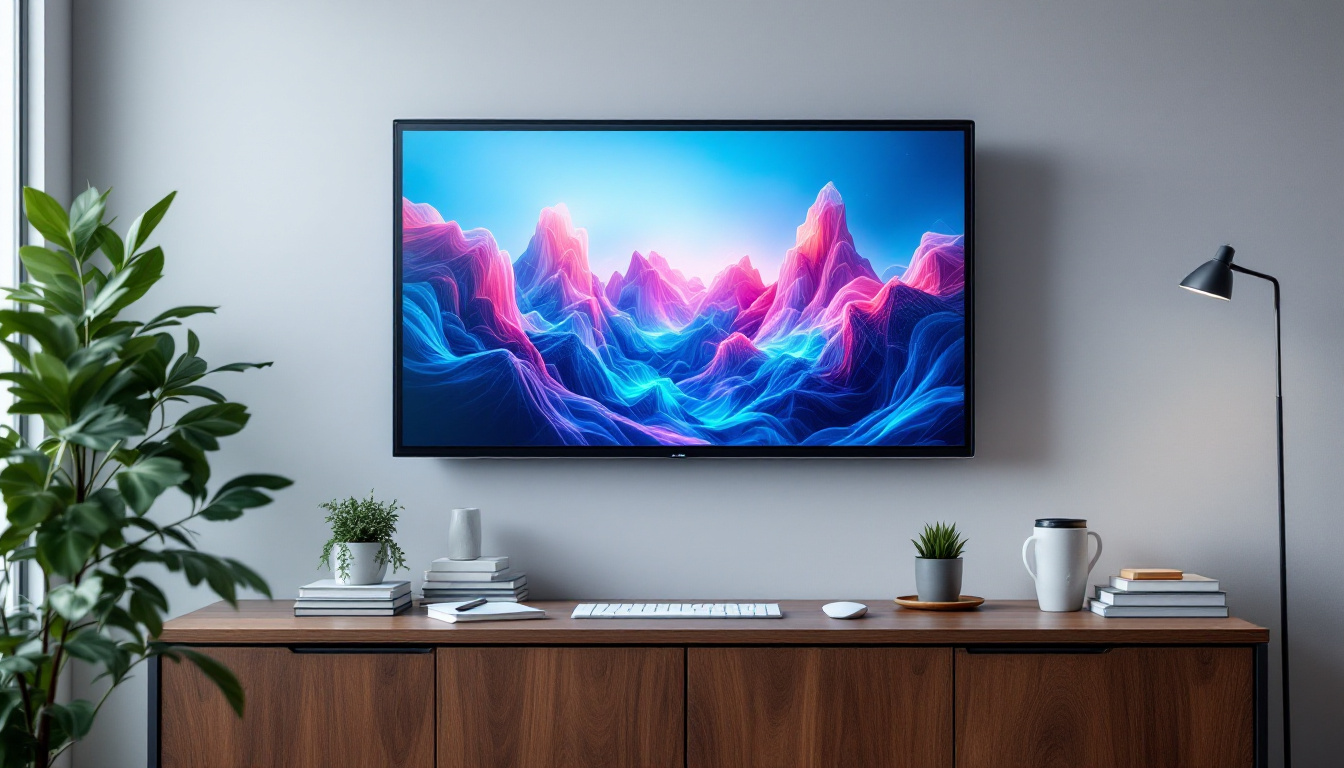In the modern world, LED displays have become ubiquitous, transforming the way information is conveyed and enhancing visual experiences across various industries. From advertising billboards to television screens, the versatility and efficiency of LED technology have made it a preferred choice for many applications. This article delves into the intricacies of LED displays, exploring their functionality, advantages, and the future of this dynamic technology.
Understanding LED Technology
LED, or Light Emitting Diode, is a semiconductor device that emits light when an electric current passes through it. Unlike traditional incandescent bulbs, LEDs are more energy-efficient, have a longer lifespan, and produce less heat. The basic principle behind LED technology involves the movement of electrons within a semiconductor material, which creates photons, or light particles. This efficiency not only reduces electricity consumption but also leads to lower energy bills and a smaller carbon footprint, making LEDs an environmentally friendly choice for lighting solutions.
Moreover, the versatility of LED technology extends beyond mere illumination. It has revolutionized various industries, including automotive lighting, horticulture, and even medical applications. For instance, in horticulture, specific wavelengths of LED light are used to promote plant growth, enhancing photosynthesis and yielding better crops. In the medical field, LEDs are utilized in phototherapy treatments for skin conditions, showcasing the broad potential of this technology.
The Components of LED Displays
LED displays consist of several critical components that work together to produce vibrant images and videos. These components include:
- LED Chips: The core of the display, these chips emit light when powered.
- Driver Circuitry: This regulates the power supplied to the LEDs, ensuring consistent brightness and color.
- Control System: This component manages the content displayed on the screen, allowing for dynamic updates and changes.
Each of these components plays a vital role in the overall performance of the LED display, contributing to its clarity, brightness, and responsiveness. The integration of advanced driver circuitry can significantly enhance the display’s efficiency, allowing for finer control over color gradients and brightness levels. This is particularly important in applications where color accuracy is critical, such as in graphic design or medical imaging. Furthermore, the control system can incorporate sophisticated software that enables real-time content management, making it possible to display advertisements, news updates, or social media feeds seamlessly.
Types of LED Displays
LED displays come in various types, each designed to meet specific needs and applications. The most common types include:
- Direct View LED: These displays are made up of individual LED modules that create images directly visible to the viewer. They are often used in large outdoor billboards and stadium screens.
- LED-backlit LCD: These displays use LED lights to illuminate an LCD panel, enhancing brightness and color accuracy. They are commonly found in televisions and computer monitors.
- Organic LED (OLED): A more advanced version of LED technology, OLED displays use organic compounds to emit light, allowing for thinner screens and better contrast ratios.
Each type of LED display has its own set of advantages and disadvantages, making it essential for consumers to choose the right one based on their specific requirements. For example, while Direct View LEDs are ideal for outdoor advertising due to their high brightness and visibility in sunlight, OLED displays are favored for their superior color depth and flexibility, making them perfect for modern smartphones and televisions. Additionally, advancements in technology continue to blur the lines between these types, leading to hybrid displays that combine the best features of each, further expanding the possibilities for both consumers and businesses alike.
Advantages of LED Displays
The popularity of LED displays can be attributed to several compelling advantages that set them apart from traditional display technologies. These benefits include:
Energy Efficiency
One of the most significant advantages of LED displays is their energy efficiency. LEDs consume significantly less power compared to traditional lighting technologies, which translates to lower electricity bills and a reduced carbon footprint. This efficiency makes them an ideal choice for businesses and organizations looking to minimize operational costs while maintaining high-quality visual output. Furthermore, the reduced energy consumption of LED displays contributes to a more sustainable environment, as it decreases the demand for energy production, which often relies on fossil fuels.
Longevity and Durability
LED displays are known for their long lifespan, often lasting up to 100,000 hours or more, depending on usage and environmental conditions. This durability reduces the need for frequent replacements, making them a cost-effective investment in the long run. Additionally, LEDs are more resistant to shock and vibration, making them suitable for various applications, including outdoor environments. Their robust construction also means they can withstand extreme weather conditions, from intense heat to heavy rain, ensuring consistent performance and reliability in diverse settings.
High Brightness and Color Accuracy
LED displays are capable of producing bright, vivid colors with excellent contrast ratios. This capability is particularly beneficial in outdoor settings where ambient light can wash out images on traditional displays. The ability to maintain color accuracy across different viewing angles further enhances the user experience, making LED displays ideal for advertising and entertainment purposes. Moreover, advancements in LED technology have led to the development of displays that can achieve a wider color gamut, allowing for more lifelike images and video content. This feature is especially crucial in industries such as film and photography, where color precision is paramount for visual storytelling.
Versatility in Applications
Another noteworthy advantage of LED displays is their versatility in various applications. From large-scale billboards and stadium screens to smaller indoor displays in retail environments, LEDs can be tailored to meet the specific needs of different industries. Their modular design allows for easy customization in size and shape, enabling creative installations that can capture the attention of audiences in unique ways. Additionally, LED technology has evolved to include flexible displays, which can be bent or shaped to fit unconventional spaces, further expanding their potential uses in architectural design and innovative advertising solutions.
Low Maintenance Requirements
In addition to their longevity, LED displays require minimal maintenance compared to other display technologies. The solid-state nature of LEDs means there are no fragile components like glass tubes, which can be easily damaged. This resilience translates to lower maintenance costs and less downtime for businesses. Furthermore, many LED displays come equipped with smart technology that allows for remote monitoring and diagnostics, enabling quick identification and resolution of any issues that may arise, thus ensuring uninterrupted operation and enhancing overall user satisfaction.
Applications of LED Displays
LED displays have found applications across a wide range of industries, each leveraging the technology’s unique advantages to enhance their operations and engage their audiences.
Advertising and Marketing
In the realm of advertising, LED displays have revolutionized the way brands communicate with consumers. Digital billboards and signage allow for dynamic content that can be updated in real-time, enabling marketers to tailor messages based on audience demographics and current events. This flexibility not only captures attention but also increases the effectiveness of advertising campaigns.
Entertainment and Events
LED displays are a staple in the entertainment industry, used in concerts, festivals, and sporting events. Large-scale LED screens provide immersive experiences for audiences, displaying high-definition visuals that enhance performances and create memorable moments. Additionally, LED technology is often utilized in stage designs, allowing for creative lighting effects and backdrops.
Transportation and Wayfinding
In transportation hubs such as airports and train stations, LED displays serve as vital information sources. They provide real-time updates on arrivals, departures, and delays, ensuring passengers stay informed. Furthermore, LED displays are used in wayfinding systems, guiding individuals through complex environments with clear, visually appealing signage.
Challenges and Considerations
Despite their numerous advantages, LED displays are not without challenges. Understanding these challenges is crucial for making informed decisions when investing in LED technology.
Initial Costs
The initial investment for LED displays can be higher than traditional display technologies. While the long-term savings on energy and maintenance can offset these costs, businesses must consider their budget and return on investment when making purchasing decisions. It is essential to evaluate the total cost of ownership, including installation and operational expenses, to determine the feasibility of an LED display solution.
Environmental Concerns
While LED technology is generally more environmentally friendly than traditional lighting, there are still concerns regarding the materials used in manufacturing LEDs, particularly regarding the disposal of outdated units. Efforts are being made in the industry to develop more sustainable practices, including recycling programs and the use of eco-friendly materials.
The Future of LED Displays
The future of LED display technology looks promising, with continuous advancements paving the way for innovative applications and improved performance. As technology evolves, several trends are emerging that could shape the landscape of LED displays.
Smart LED Displays
With the rise of the Internet of Things (IoT), smart LED displays are becoming increasingly prevalent. These displays can connect to the internet, allowing for remote management and real-time content updates. This connectivity enhances the versatility of LED displays, enabling businesses to respond quickly to changing conditions and audience preferences.
Flexible and Transparent Displays
Innovations in LED technology are leading to the development of flexible and transparent displays. These displays can be integrated into various surfaces, such as windows and walls, opening up new possibilities for advertising and design. The ability to create seamless, immersive environments will likely transform how brands engage with consumers.
Enhanced Resolution and Color Depth
As technology advances, LED displays are expected to offer even higher resolutions and improved color depth. This enhancement will provide viewers with an unparalleled visual experience, making LED displays an even more attractive option for entertainment, advertising, and information dissemination.
Conclusion
LED displays have undoubtedly transformed the visual landscape, offering a blend of efficiency, durability, and stunning visuals. As technology continues to evolve, the applications and capabilities of LED displays will expand, providing new opportunities for businesses and consumers alike. Understanding the intricacies of LED technology, its advantages, and potential challenges is essential for making informed decisions in this rapidly changing field.
Whether in advertising, entertainment, or information dissemination, LED displays are set to remain a cornerstone of modern communication and engagement, shaping the way information is presented and experienced in the years to come.
Discover the Future of Visual Engagement with LumenMatrix
As you’ve seen, LED displays are at the forefront of innovation in visual communication, offering unparalleled efficiency, durability, and visual impact. Embrace the future with LumenMatrix, a leader in LED display technology, and explore our comprehensive range of solutions designed to elevate your brand’s presence. From Indoor and Outdoor LED Wall Displays to specialized options like Vehicle, Sports, and Floor LED Displays, we have the cutting-edge technology to create the captivating visual experiences your audience deserves. Our mission is to revolutionize your visual storytelling with clarity and impact. Check out LumenMatrix LED Display Solutions today and see how we can illuminate your message.

